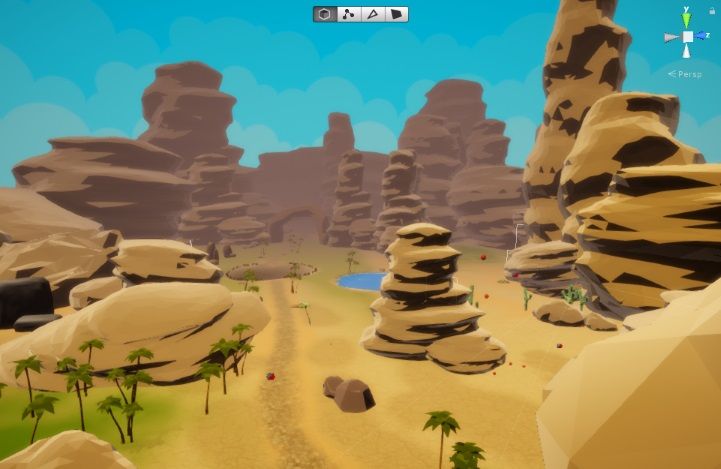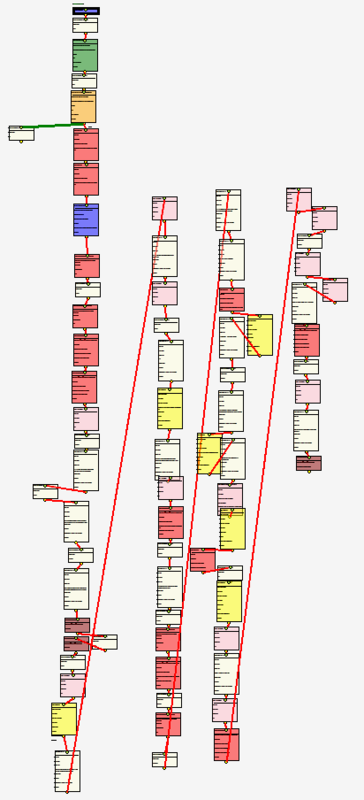And now, with the scripting tool ready to be tested, and the beautiful placeholder as the main protagonist, it's time for some cinematic action. Remember: our goal was to make an rpg with a deep combat system and an entertaining story to follow (what else?!). The first thing you need to tell a story is having a story to tell. So, with a limited scope for lenght and complexity, I wrote two short scenes in my best adventure/fantasy parody style. The idea was connecting both scenes through the gameplay, making a short demo of what could be a game developed with these tools.
The script is something along the lines of a couple of soldiers travelling through a desert to accomplish their super important quest, facing all kind of problems to continue their journey. What super important quest could that be? The omission of it makes it far more interesting than anything I could make up. I decided that two levels (two big scenes) was enough for a good demo. The first one being a desert, which I had to design. As the main goal wasn't a good level design, I didn't put much effort in it (altough in the next level, I tried hard making an interesting one). Even though, I think it's cute enough.

So, in the intro cinematic we see these two soldiers talking about past adventures as they cross the desert. Of course, an enemy appears and then they have to fight it. The focus was not in originality, but entertainment. When I was happy enough about the script, I started translating it into the scripting tool.
I splitted the work in two tasks:
- Making the cinematic itself (controlling the behaviour of all characters and events in the scene).
- Using a Unity plugin (Cinemachina) to "film" what the script was playing.
So, on the one hand I had two characters talking for 30 seconds, and on the other I had to control from within Unity the camera behaviour. In retrospective, even if I liked the final result, I must confess I wouldn't do it like this again, mainly due to editing reasons (a living hell). Having the camera control independent of what's happening in the screen means that if I change anything (ANYTHING!) in the script, I must synchronize the whole cinematic again. That's a lot of testing and debugging. A LOT. In the following cinematics I made, I controlled the camera transitions and behaviour from nodes within the tree script, so unrelated changes usually don't affect camera behaviour.
And after some work (the whole process took me a couple of days, I blame the camera issues), I finally had my first cinematic. Feel free to comment about it.
So, we now have a combat system, a scripting tool, a silly story and a cinematic. The following step is using all of these things to make an actual game.
